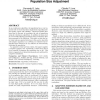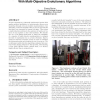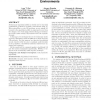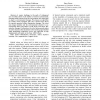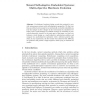102 search results - page 4 / 21 » Peer-to-peer evolutionary algorithms with adaptive autonomou... |
GECCO
2006
Springer
13 years 11 months ago
2006
Springer
In an evolutionary algorithm, the population has a very important role as its size has direct implications regarding solution quality, speed, and reliability. Theoretical studies ...
GECCO
2007
Springer
2007
Springer
Optimising the flow of experiments to a robot scientist with multi-objective evolutionary algorithms
14 years 1 months ago
A Robot Scientist is a physically implemented system that applies artificial intelligence to autonomously discover new knowledge through cycles of scientific experimentation. Ad...
GECCO
2005
Springer
14 years 1 months ago
2005
Springer
Evolutionary algorithms (EAs) are widely used to deal with optimization problems in dynamic environments (DE) [3]. When using EAs to solve DE problems, we are usually interested i...
IROS
2007
IEEE
14 years 1 months ago
2007
IEEE
— A major challenge in the path of widespread use of mobile robots is the ability to function autonomously, learning useful features from the environment and using them to adapt ...
ARCS
2007
Springer
13 years 11 months ago
2007
Springer
Abstract. Evolutionary hardware design reveals the potential to provide autonomous systems with self-adaptation properties. We first outline an architectural concept for an intrins...
